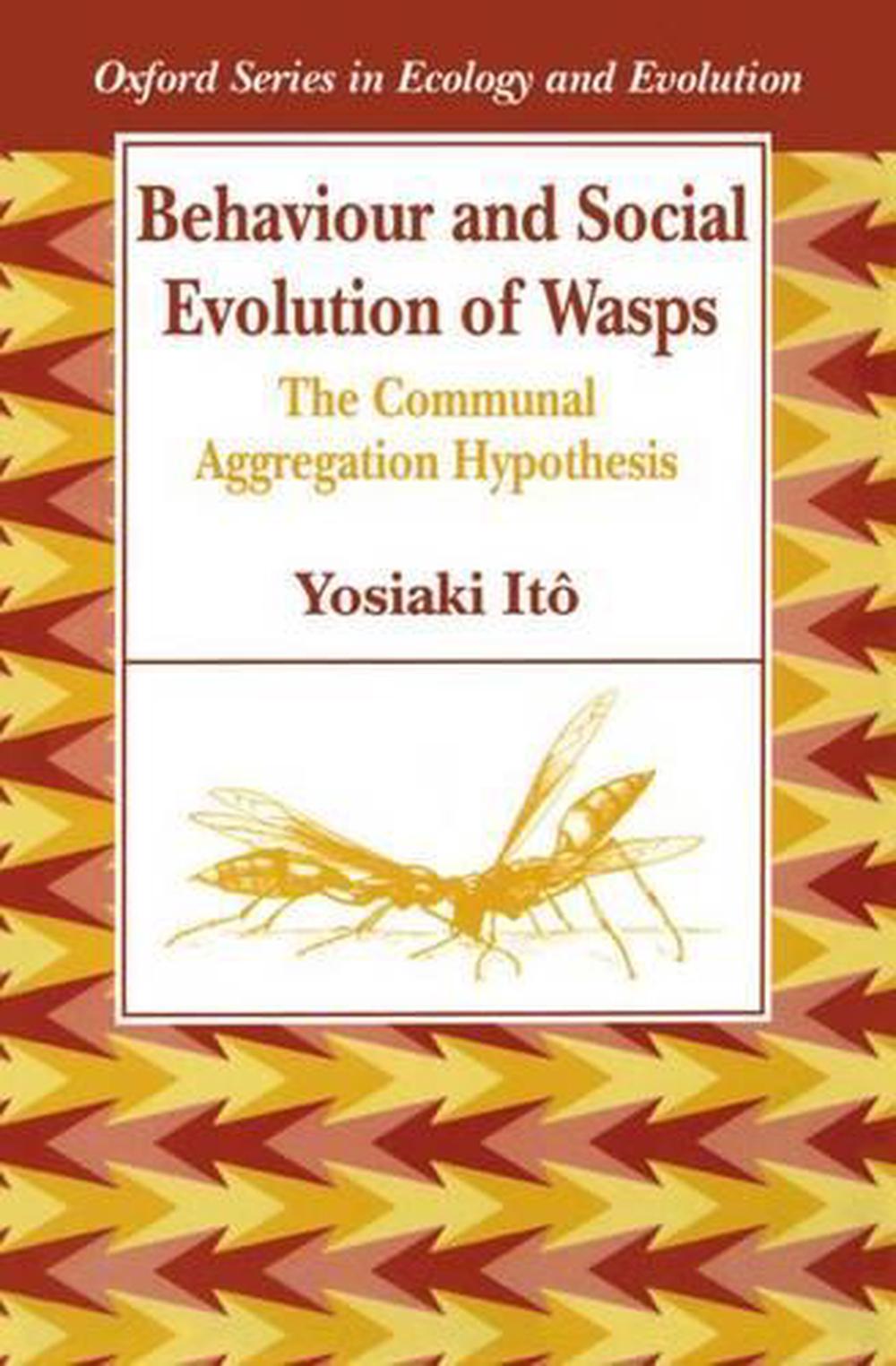
Behaviour and Social Evolution of Wasps
by Yosiaki Itô
Of interest to all students of ecology, evolution and behaviour, this work discusses the significance of multi-queen colonies and the evolutionary pathways that may have led to observed social patterns.
Paperback
English
Brand New
Publisher Description
In this book, Yosiaki Ito presents data on tropical wasps which suggests that kin-selection has been over-emphasized as an evolutionary explanation of sociality. He concentrates on the Vespidae (paper wasps and hornets), a group much discussed by evolutionary biologists because it exhibits all stages of social evolution - subsociality, primitive eusociality and advanced eusociality. The author reports field observations by himself and others in Central America, Asia and Australia, showing that multiple egg-layers in a nest are not uncommon. Because coexistence of many "queens" leads to lower relatedness among colony members than in single-queen colonies, he suggests that kin-selection may not be the most powerful force determining observed social patterns. Instead, subsocial wasps may first have aggregated for defence purposes in habitats with a high risk of predation, with mutualistic associations among many queens. Through parental manipulation and then kin-selection, differentiation into within-generation castes may have followed. This study should be of interest to students of ecology, evolution and behaviour.
Author Biography
Yosiaki Ito is at Okinawa University.
Table of Contents
Introduction; Systematics and sociality of wasps; Theories on the evolution of eusociality; Problems with the kin-selection hypothesis; Comparison of dominance relations and proportion of multi-female nests in the Polistinae; Ropalidia fasciata in Okinawa, Japan; a species with flexible social relations; Social relations in wasp colonies in the wet tropics; Polistine wasps in Panama; Role of miltuple comb construction and perennial nature of nests: Polistinewasps in Australia; Multi-queen societies: swarm-founding wasps in the tropics; Social lives of the other social wasps; Origin of pleometrosis: altruism or mutualism?; Manipulation of progeny by mothergroups: an hypothesis for the evolution of multi-queen societies; Kin-selection and multi-queen social systems; Conclusion; References; Index.
Review
'Ito is a wasp enthusiast and this book will be chiefly enjoyed by entomologists. He does not present major new ideas, but the book's strength is the careful experimental account of many years' study of paper wasps, mostly of the species whose biology was previously unknown, and much of it previously published in Japanese journals ... this is a worthwhile book that will materially contribute to a more pluralistic study of the evolution of advanced insectsocieties.'Times Higher`Yosiaki Ito has been among the most active field researchers on social Vespidae for more than 20 years and has contributed significantly to this evolutionary debate. He is therefore particularly well positioned to write this book ... a very valuable and enjoyable book ... the book is impressive in producing a comprehensive explanation of the evolution of varied vespid social systems'Michael Hansell, University of Glasgow, Animal Behaviour 1994, 47`this is a valuable book and one that I would recommend to anyone interested in eusocial insects'Paul Eggleton, Journal of Natural History, 1995, 29`This book beautifully illustrates the ability to combine wide-ranging data with thoughtful questions. It offers a basis for further research in this respect, but is also of general interest to all students of ecology, evolution and behaviour.'Entomologia Generalis, Vol. 22 No. 1
Long Description
In this book, Ito presents data on tropical wasps which suggest that kin-selection has been overemphasized as an evolutionary explanation of sociality. He concentrates on the Vespidae (paper wasps and hornets), a group much discussed by evolutionary biologists because it exhibits all stages of social evolution: subsociality, primitive eusociality, and advanced eusociality. The author reports field observations by himself and others in Central America, Asia, and Australia, showing that multiple egg-layers in a nest are not uncommon. Because coexistence of many 'queens' leads to lower relatedness among colony members than in single-queen colonies, he suggests that kin-selection may not be the most powerful force determining observed social patterns. Instead, subsocial wasps may first have aggregated for defense purposes in habitats with a high risk of predation, with mutualistic associations among many queens. Through parental manipulation and then kin selection, differentiation into within-generation castes may have followed. Of interest to all students of ecology, evolution, and behavior, this book beautifully demonstrates the author's ability to combine wide-ranging data with thoughtful questions.
Review Text
'Ito is a wasp enthusiast and this book will be chiefly enjoyed by entomologists. He does not present major new ideas, but the book's strength is the careful experimental account of many years' study of paper wasps, mostly of the species whose biology was previously unknown, and much of it previously published in Japanese journals ... this is a worthwhile book that will materially contribute to a more pluralistic study of the evolution of advanced insect
societies.'
Times Higher
`Yosiaki Ito has been among the most active field researchers on social Vespidae for more than 20 years and has contributed significantly to this evolutionary debate. He is therefore particularly well positioned to write this book ... a very valuable and enjoyable book ... the book is impressive in producing a comprehensive explanation of the evolution of varied vespid social systems'
Michael Hansell, University of Glasgow, Animal Behaviour 1994, 47
`this is a valuable book and one that I would recommend to anyone interested in eusocial insects'
Paul Eggleton, Journal of Natural History, 1995, 29
`This book beautifully illustrates the ability to combine wide-ranging data with thoughtful questions. It offers a basis for further research in this respect, but is also of general interest to all students of ecology, evolution and behaviour.'
Entomologia Generalis, Vol. 22 No. 1
Review Quote
'Yosiaki Ito has been among the most active field researchers on socialVespidae for more than 20 years and has contributed significantly to thisevolutionary debate. He is therefore particularly well positioned to write thisbook ... a very valuable and enjoyable book ... the book is impressive inproducing a comprehensive explanation of the evolution of varied vespid socialsystems'Michael Hansell, University of Glasgow, Animal Behaviour 1994, 47
Details

